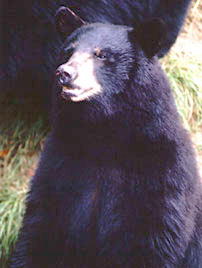
A homeowner’s guide to living with bears was recently published by the S.C. Department of Natural Resources, offering handy tips for peacefully co-existing with these fascinating mammals.
Authored by Deanna Ruth, a S.C. Department of Natural Resources (DNR) wildlife biologist based at Samworth Wildlife Center in Georgetown County, “A Homeowner’s Guide: Living with Bears” offers common-sense rules to homeowners that will help them avoid unpleasant encounters with Ursus americanus, the black bear. The bear brochure also details some interesting natural history information on this often-feared and frequently misunderstood wildlife species.
To obtain a copy of the homeowner’s guide to living with bears brochure, visit DNR offices in Clemson, Georgetown or Florence, or call the Columbia DNR office at (803) 734-3886. The brochure is also available on the DNR Web site at www.dnr.sc.gov/wildlife/bear.
“This year we are preaching enticement, enticement, enticement,” said Ruth. “If you take away the enticements that attract black bear, such as garbage cans, bird feeders, pet food, barbecue grills, compost piles and similar things, then you will likely not have problems with black bear.”
With the hard frost experienced in many areas on Easter weekend, many experts are predicting a near total failure of hard mast (acorns, hickories, etc.) and soft mast (dogwood and blackgum berries, etc.) in the forest this fall. If that turns out to be the case, bears will be scrambling to find food, so it will be especially important for homeowners to remove enticements for bear.
“Remember, anything that attracts dogs, cats or raccoons will also attract bears,” said Ruth. “Also, it is illegal to intentionally feed black bears in South Carolina.”
Black bear is the only bear species in South Carolina. A male black bear’s territory may have a radius of 10 miles, while a female black bear’s territory has a radius of 4 to 5 miles. About 80 percent of a black bear’s diet is plant matter such as berries and nuts, while the other 20 percent is made up of insects and meat. Adult black bears typically weight 180 to 350 pounds. The largest male bear on record in South Carolina weighed 594 pounds.



Be the first to comment